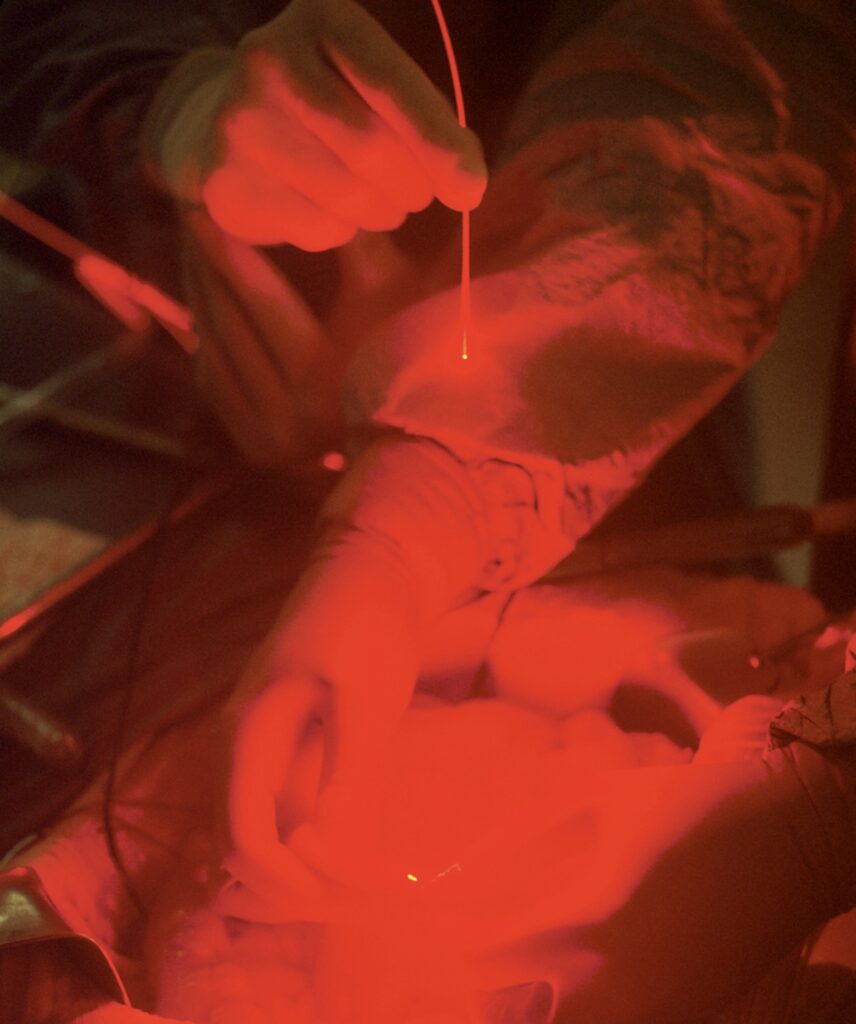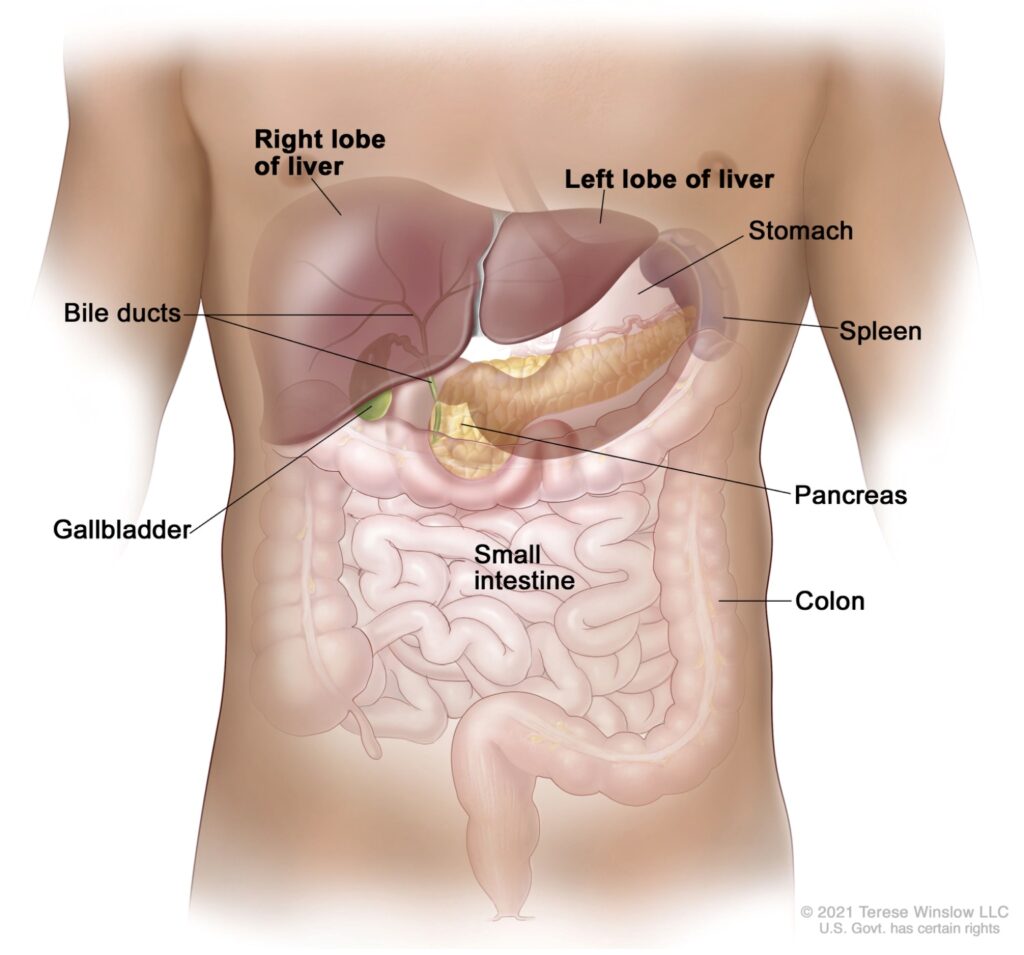Text by Henrylito D. Tacio
Photos: NCI and Wikipedia
The wedge-shaped liver is the largest – and in some ways the most complex – organ in the human body. It has several vital functions: aside from being the body’s chemical factory, it also regulates the levels of chemicals in the body and produces substances that make the blood clot during bleeding.
In the Philippines, liver cancer is the third most predominant cancer; it is the second most prevalent in males and the ninth most prevalent in females, according to the Department of Health (DOH).
Like other forms of cancer, liver cancer – also known as hepatic cancer – is deadly. Pahar Pangcoga was popularly known as Chef Hasset Go for being the “Master of Sweets.” Months after his brother, Rowden, was diagnosed with liver cancer, he found himself that he, too, was suffering from the same disease.
Like his brother, who died a few hours after he married his longtime girlfriend and fiancée Liezel, Hasset also succumbed to liver cancer. The co-owner of the French fine dining restaurant Le Jardin in Bonifacio Global City was only 29 years old when he passed away on October 24, 2015.
Liver cancer claimed the lives of 20 Filipinos a day in 2014, statistics showed. Now, if nothing is done soon, the figure is projected to double by 2030. That’s according to Dr. Samuel So of Stanford’s Asian Liver Center whose projection was based on the latest estimates of the International Agency for Research on Cancer (IARC) for the Philippines.
Around the world, liver cancer is the sixth most common cancer, with 750,000 people diagnosed every year. “Because the liver is made up of different types of cells, many types of tumors can form in the liver,” says the American Cancer Society (ACS). “Some of these are cancers and some are not. The outlook for your health or your recovery (prognosis) depends on what type of tumor you have.”
Liver cancer is cancer that begins in the cells of the liver. “The most common form of liver cancer is hepatocellular carcinoma, which begins in the main type of liver cell (hepatocyte). Other types of cells in the liver can develop cancer, but these are much less common,” the Mayo Clinic says.
But not all cancers that affect the liver are considered liver cancer. “Cancer that begins in another area of the body — such as the colon, lung or breast — and then spreads to the liver is called metastatic cancer rather than liver cancer,” Mayo Clinic explains. “And this type of cancer is named after the organ in which it began — such as metastatic colon cancer to describe cancer that begins in the colon and spreads to the liver.”
One of the reasons why liver cancer is deadly is because people don’t know they have the disease. Liver cancer develops ominously, often presenting no symptoms at all. By the time symptoms appear, it is already too late and the outlook for recovery is bleak.
The Mayo Clinic says that when signs and symptoms do appear, they may include the following: losing weight without trying, loss of appetite, upper abdominal pain, nausea and vomiting, general weakness and fatigue, abdominal swelling, yellow discoloration of skin and the whites of the eyes (jaundice) and white, chalky stools.
If you experience any signs or symptoms that worry you, make an appointment immediately with your doctor, the Mayo Clinic advises. Forewarned, so goes a familiar saying, is forearmed.
Despite the advancement of medical science, it is still vague as to what causes liver cancer. But several studies point to infection due to the Hepatitis B virus (HBV) as the main culprit as it accounts for 53% of primary liver cancer cases globally.
“Hepatitis B virus is the most common cause of liver cancer around the world,” says Professor Mei-Hwei Chang, chairman of the Department of Pediatrics at the National Taiwan University Hospital in Taipei. “Although hepatitis C virus is the most prevalent cause of liver cancer in some countries where HBV infection is not prevalent, HBV is still the most prevalent cause worldwide.”
The HBV may be found in blood, semen, vaginal fluids, tears, and saliva. It is transmitted the same way as human immunodeficiency virus (HIV). That is, through sexual intercourse (vaginal, oral, or anal), use of contaminated needles, unsafe blood transfusion, and from mother to child.
Most people who get HBV fight off the infection by themselves, but the HBV antibodies “will be present in their blood for the rest of their lives,” Dr. Alan Berkman writes in his book, Hepatitis A to G: The Facts You Need to Know About All The Forms of This Dangerous Disease.
“Generally, hepatitis B is a mild, self-limiting infection,” wrote Dr. Eduardo Gonzales in his Manila Bulletin column. “In about 10% of cases, however, the body’s defenses are unable to eliminate the virus and chronic hepatitis B ensues. Over time, chronic hepatitis B gives rise to cirrhosis or severe scarring of the liver.
Cirrhosis of the liver is the most important predisposing factor to liver cancer. “About 80% of all liver cancers arise from liver cirrhosis,” Dr. Gonzales wrote. “Incidentally, the other form of hepatitis that causes cirrhosis is chronic hepatitis C, but this is not a very significant cause of cirrhosis among Filipinos.”
Aside from HBV, liver cirrhosis may be due to drinking excessive amounts of alcohol over many years, hemochromatosis (an inherited disorder in which iron levels in the body slowly build up through the years), and primary biliary cirrhosis (a long-term liver disease in which the bile ducts in the liver become damaged).
Exposure to aflatoxins is another cause. “Aflatoxins are poisons produced by molds that grow on crops that are stored poorly,” the Mayo Clinic explains. “Crops such as grains (corn for one) and nuts (particularly peanuts), can become contaminated with aflatoxins, which can end up in foods made of these products.”
Another possible cause is non-alcoholic fatty liver disease, particularly non-alcoholic steatohepatitis (NASH). Most people with simple fatty liver don’t undergo sickness related to the liver. Those with NASH, however, have inflammation and injury to their liver cells.


“This increases the risk of progression to more serious conditions like scarring of the liver, cirrhosis, and liver cancer,” writes Dr. Wynne Armand, Harvard Health Publishing’s contributing editor of the Harvard Medical School.
Without treatment, most liver cancer patients die within a year of diagnosis. “The five-year survival rate for the disease, if no treatment is undertaken, is less than five percent,” Dr. Gonzales wrote. “But even with treatment, it is still a low 35 percent.”
Treatment for liver cancer depends on the stage the condition is at. “If diagnosed early, it may be possible to remove the cancer completely,” says the National Health Services (NHS) of the United Kingdom.
Treatment options in the early stages include: surgical resection (surgery to remove a section of the liver) and microwave or radiofrequency ablation (where microwaves or radio waves are used to destroy the cancerous cells.
Another one is liver transplant, where the liver is replaced with a donor liver. “Liver transplantation is a potentially life-saving procedure to patients with decompensated liver cirrhosis and advanced hepatocellular carcinoma,” the National Kidney and Transplant Institute said.
An ounce of prevention is better than a pound of cure, so goes another familiar saying. “Liver cancer is highly fatal but it is preventable because its major risk factors are already known,” Dr. Gonzales wrote.
The Mayo Clinic recommends the following prevention tips:
Get vaccinated against hepatitis B. You reduce your risk of hepatitis B by receiving the hepatitis B vaccine. The vaccine can be given to almost anyone, including infants, older adults and those with compromised immune systems.
Maintain a healthy weight. If your current weight is healthy, work to maintain it by choosing a healthy diet and exercising most days of the week. If you need to lose weight, reduce the number of calories you eat each day and increase the amount of exercise you do. Aim to lose weight slowly – half to one kilogram each week.
Drink alcohol in moderation, if at all. If you choose to drink alcohol, limit the amount you drink. For women, this means no more than one drink a day. For men, this means no more than two drinks a day.
The website of Medicard Philippines also recommends the following:
Watch out for certain medicines. Some drugs can occasionally have a side effect that causes liver problems.
Be careful with herbs and dietary supplements. Some can harm your liver. Choose wisely which to take.
Don’t touch or breathe in toxins. Some cleaning products, aerosol products, and insecticides have chemicals that can damage your liver. Avoid direct contact with them. Additives in cigarettes can also damage your liver, so don’t smoke.
Drink coffee. Research shows that it can lower your risk of getting liver disease. No one knows why this is so, but it’s worth keeping an eye on as more research is done.

